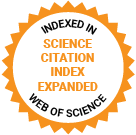Journal of Medical Internet Research
The leading peer-reviewed journal for digital medicine and health and health care in the internet age.
Editor-in-Chief:
Gunther Eysenbach, MD, MPH, FACMI, Founding Editor and Publisher; Adjunct Professor, School of Health Information Science, University of Victoria, Canada
Impact Factor 5.8 CiteScore 14.4
Recent Articles

Evaluating precision oncology outcomes requires access to real-world and clinical trial data. Access is based on consent, and consent is based on patients’ informed preferences when deciding to share their data. Decision-making is often modeled using utility theory, but a complex decision context calls for a consideration of how heuristic, intuitive thought processes interact with rational utility maximization. Data-sharing decision-making has been studied using heuristic theory, but almost no heuristic research exists in the health data context. This study explores this evidence gap, applying a qualitative approach to probe for evidence of heuristic mechanisms behind the health data-sharing preferences of those who have experienced cancer. Exploring qualitative decision-making reveals the types of heuristics used and how they are related to the process of decision-making to better understand whether consent mechanisms should consider nonrational processes to better serve patient decision-making.

Open-world games, characterized by their expansive and interactive environments, may offer unique cognitive escapism opportunities, potentially leading to relaxation and enhanced well-being. These games, such as “The Legend of Zelda: Breath of the Wild” and “The Legend of Zelda: Tears of the Kingdom,” allow players to experience a sense of freedom and autonomy, which can reduce stress and improve mental health. While previous research has examined the general impact of video games on mental well-being, specific studies on the effects of open-world games among postgraduate students are limited.

As of 2021, at least 4 out of every 5 hospitals offered patients access to clinical notes via a web-based patient portal, a number that is expected to grow because of the 21st Century Cures Act. There is limited data on how open note use may have evolved over time or which types of clinical interactions were viewed most in the outpatient setting.

The performance of a classification algorithm eventually reaches a point of diminishing returns, where the additional sample added does not improve the results. Thus, there is a need to determine an optimal sample size that maximizes performance while accounting for computational burden or budgetary concerns.

A low breastfeeding rate causes an increased health care burden and negative health outcomes for individuals and society. Coparenting is an essential tactic for encouraging breastfeeding when raising a child. The efficacy of the coparenting interventions in enhancing breastfeeding-related outcomes is controversial.

Since the early studies exploring the use of SMS text messaging for health intervention, text messaging has played a pivotal role in the advancement of mobile health. As an intervention modality, text messaging has provided vital learnings for the design and delivery of interventions, particularly in low-resource settings. Despite the advances in technology over the last 25 years, text messaging is still being used in largely the same way to deliver health information, behavior change interventions, and support. The strong, consistent evidence for the benefits of this type of intervention has made text messaging a routine part of health interventions around the world. Key to its success is its simplicity, alongside the benefit of being arguably the most accessible form of consumer digital health intervention. Text message interventions are well suited for public health interventions due to their low cost, vast reach, frequent use, high read rates, and ability to be tailored and personalized. Furthermore, the nature of text messaging interventions makes them ideal for the delivery of multilingual, culturally tailored interventions, which is important in the context of increasing cultural diversity in many countries internationally. Indeed, studies assessing text message–based health interventions have shown them to be effective across sociodemographic and ethnic groups and have led to their adoption into national-level health promotion programs. With a growing focus on artificial intelligence, robotics, sensors, and other advances in digital health, there is an opportunity to integrate these technologies into text messaging programs. Simultaneously, it is essential that equity remains at the forefront for digital health researchers, developers, and implementers. Ensuring digital health solutions address inequities in health experienced across the world while taking action to maximize digital inclusion will ensure the true potential of digital health is realized. Text messaging has the potential to continue to play a pivotal role in the delivery of equitable digital health tools to communities around the world for many years to come. Further new technologies can build on the humble text message, leveraging its success to advance the field of digital health. This Viewpoint presents a retrospective of text messaging in health, drawing on the example of text message–based interventions for smoking cessation, and presents evidence for the continued relevance of this mobile health modality in 2025 and beyond.


In 2019, we launched a web-based longitudinal survey of adults who frequently use e-cigarettes, called the Vaping and Patterns of E-cigarette Use Research (VAPER) Study. The initial attempt to collect survey data failed due to fraudulent survey submissions, likely submitted by survey bots and other survey takers. This paper chronicles the journey from that setback to the successful completion of 5 waves of data collection. The section “Naïve Beginnings” examines the study preparation phase, identifying the events, decisions, and assumptions that contributed to the failure (eg, allowing anonymous survey takers to submit surveys and overreliance on a third-party’s proprietary fraud detection tool to identify participants attempting to submit multiple surveys). “A 5-Alarm Fire and Subsequent Investigation” summarizes the warning signs that suggested fraudulent survey submissions had compromised the data integrity after the initial survey launched (eg, an unanticipated acceleration in recruitment and a voicemail alleging fraudulent receipt of multiple gift codes). This section also covers the investigation process, along with conclusions regarding how the methodology was exploited (eg, clearing cookies and using virtual private networks) and the extent of the issue (ie, only 363/1624, 22.4% of the survey completions were likely valid). “Building More Resilient Methodology” details the vulnerabilities and threats that likely compromised the initial survey attempt (eg, anonymity and survey bots); the corresponding mitigation strategies and their benefits and limitations (eg, personal record verification platforms, IP address matching, virtual private network detection services, and CAPTCHA [Completely Automated Public Turing test to tell Computers and Humans Apart]); and the array of strategies that were implemented in future survey attempts. “Staying Vigilant” recounts the identification and management of an additional threat that emerged despite the implementation of an array of mitigation strategies, underscoring the need for ongoing vigilance and adaptability. While the precise nature of the threat remains unknown, the evidence suggested multiple fraudulent surveys were submitted by a single or connected entities, who likely did not possess e-cigarettes. To mitigate the chance of reoccurrence, participants were required to submit an authentic photo of their most used e-cigarette. Finally, in “Reflection 4 Years Later,” we share insights after completing 5 waves of data collection without additional threats or vulnerabilities uncovered that necessitated the application of further mitigation strategies. Reflections include reasons for confidence in the data’s integrity, the scalability and cost-effectiveness of the study protocols, and the potential introduction of sampling bias through recruitment and mitigation strategies. By sharing our journey, we aim to provide valuable insights for researchers facing similar challenges with web-based surveys and those seeking to minimize such challenges a priori. Our experiences highlight the importance of proactive measures, continuous monitoring, and adaptive problem-solving to ensure the integrity of data collected from participants recruited from web-based platforms.

The number of confirmed COVID-19 cases is a crucial indicator of policies and lifestyles. Previous studies have attempted to forecast cases using machine learning techniques that use a previous number of case counts and search engine queries predetermined by experts. However, they have limitations in reflecting temporal variations in queries associated with pandemic dynamics.

The postpartum period is a critical phase in a woman's life, marked by various physical, psychological, and social challenges. In light of the rapid proliferation and uptake of digital technologies, particularly in the United Arab Emirates (UAE), mothers increasingly seek informational and emotional support from digital resources. No previous study has thoroughly explored the usage of various digital resources beyond telehealth services in the UAE. This literature gap is particularly relevant for the postpartum period, which remains largely understudied in the UAE.
Preprints Open for Peer-Review
Open Peer Review Period:
-
Open Peer Review Period:
-
Open Peer Review Period:
-
Open Peer Review Period:
-
Open Peer Review Period:
-



















